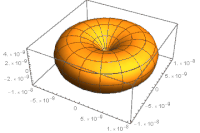Mie theory

Hey kiddo, have you ever heard of Mie Theory? It's a fancy way of talking about how light interacts with really tiny things called particles.
Imagine you have a bunch of tiny balls, maybe like beads or marbles, and you shine a flashlight at them. The light hits the balls, and some of it bounces off and goes in different directions, while some of it gets absorbed by the ball. Now imagine if the balls are really, really tiny - so tiny you can't even see them without a microscope. These tiny balls are called particles.
Mie Theory helps us understand how light interacts with these super tiny particles. It's kind of like a set of instructions that helps us know what will happen when light hits a certain kind of particle. We can use Mie Theory to predict things like how much light will get absorbed by a particle, how much will bounce off, and what patterns the light will create as it bounces around and gets scattered by the particles.
Scientists use Mie Theory to study things like clouds (which are made up of tiny water droplets), dust in the air, and even microscopic particles in our blood or in the air we breathe. By understanding how light interacts with these particles, scientists can learn more about how the world around us works. Pretty cool, huh?
Imagine you have a bunch of tiny balls, maybe like beads or marbles, and you shine a flashlight at them. The light hits the balls, and some of it bounces off and goes in different directions, while some of it gets absorbed by the ball. Now imagine if the balls are really, really tiny - so tiny you can't even see them without a microscope. These tiny balls are called particles.
Mie Theory helps us understand how light interacts with these super tiny particles. It's kind of like a set of instructions that helps us know what will happen when light hits a certain kind of particle. We can use Mie Theory to predict things like how much light will get absorbed by a particle, how much will bounce off, and what patterns the light will create as it bounces around and gets scattered by the particles.
Scientists use Mie Theory to study things like clouds (which are made up of tiny water droplets), dust in the air, and even microscopic particles in our blood or in the air we breathe. By understanding how light interacts with these particles, scientists can learn more about how the world around us works. Pretty cool, huh?
Related topics others have asked about:
